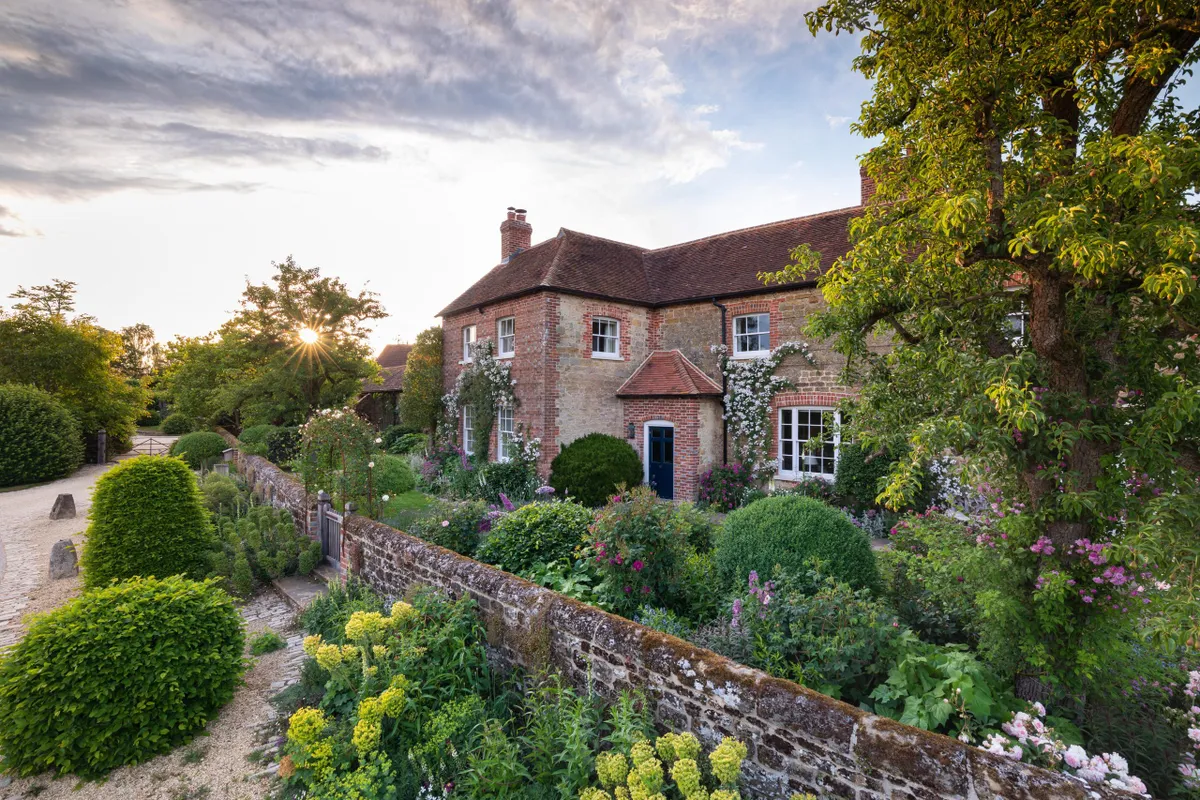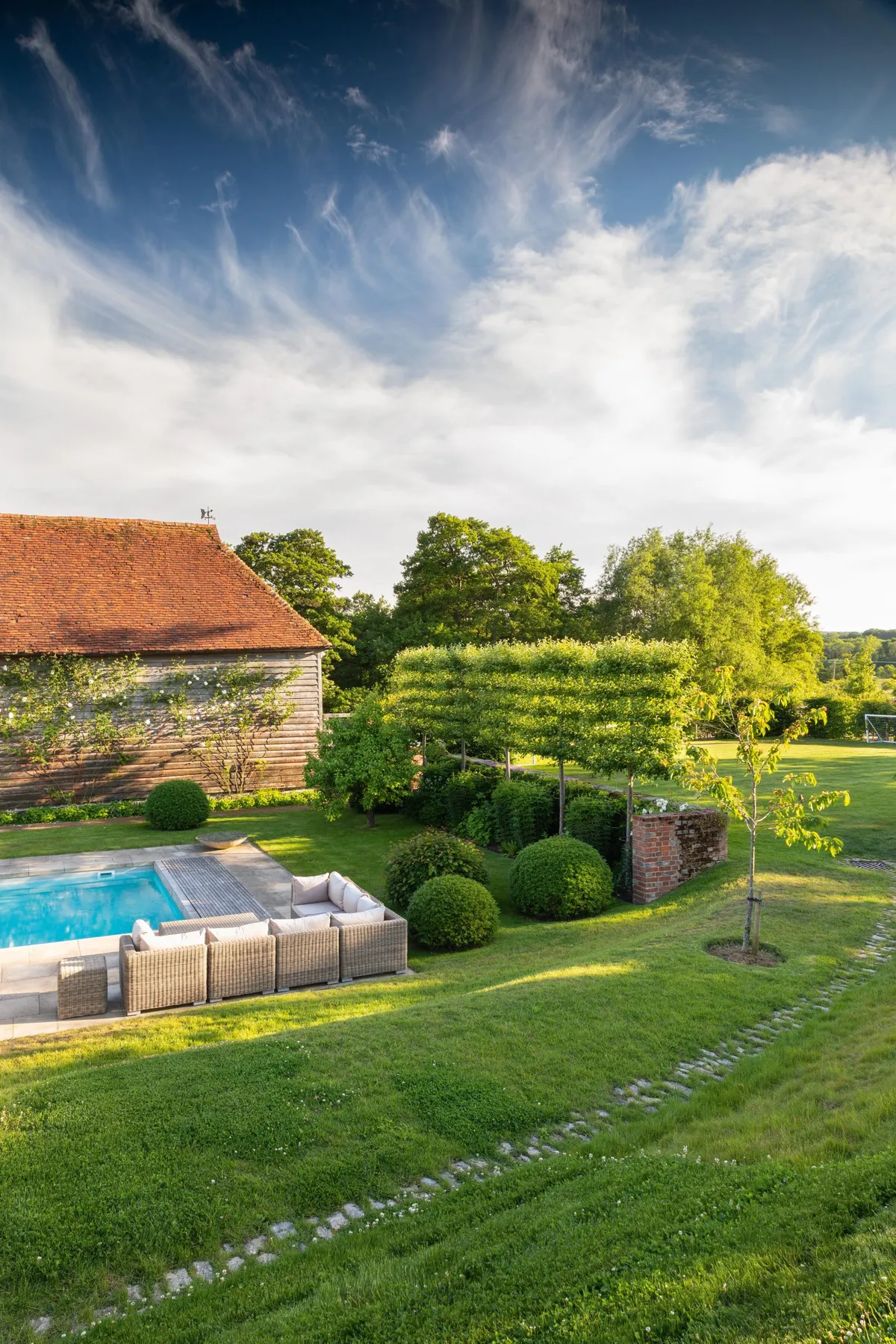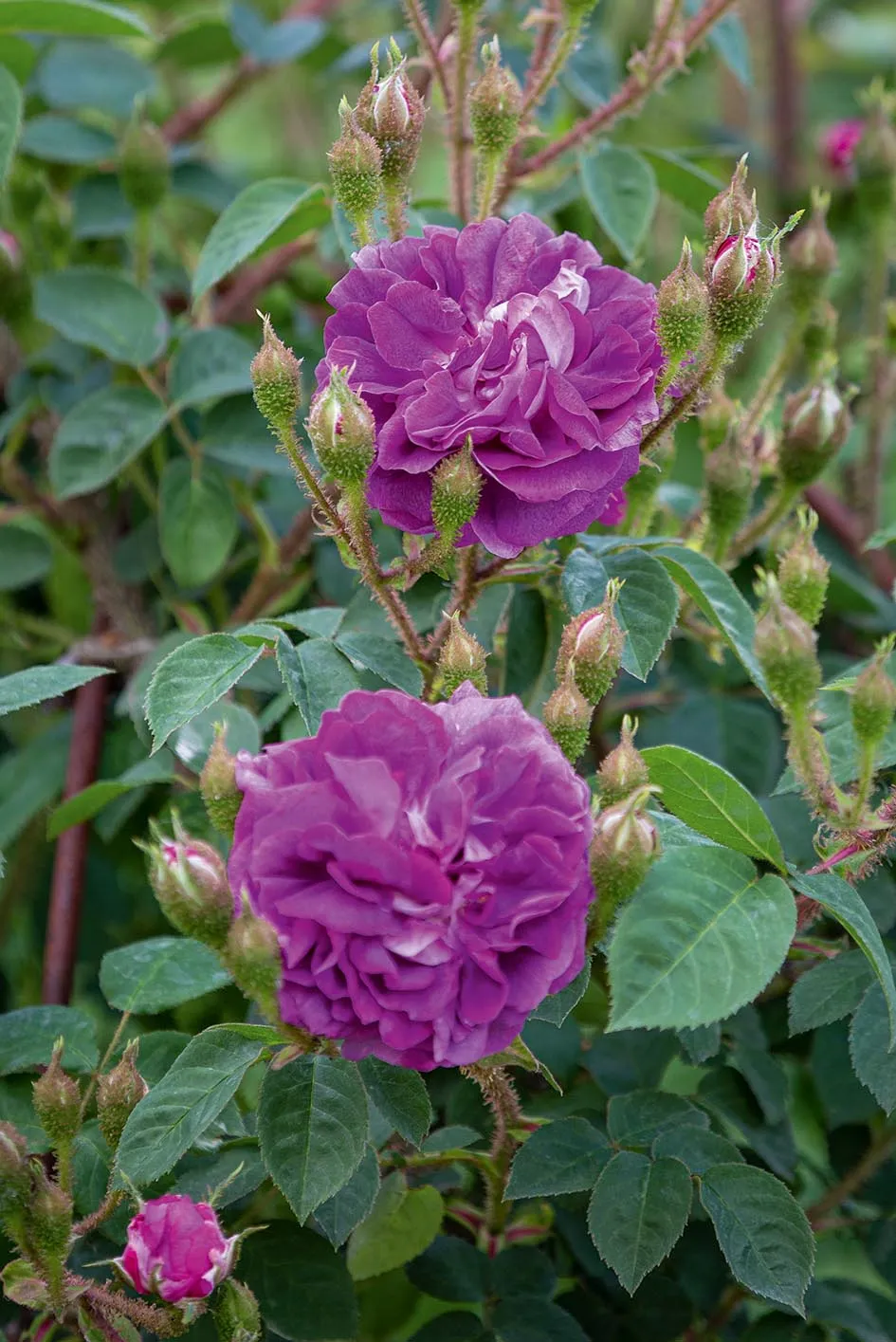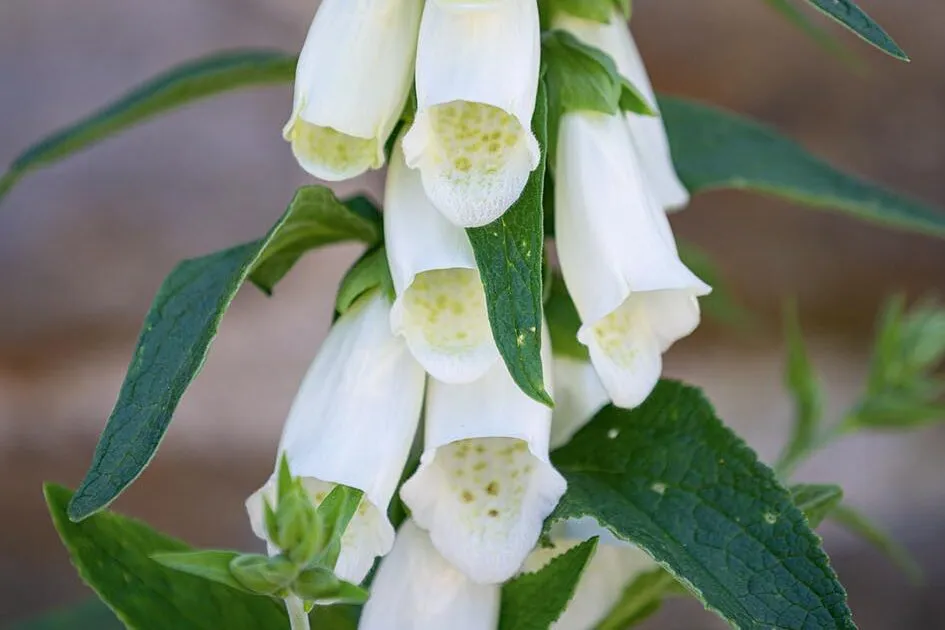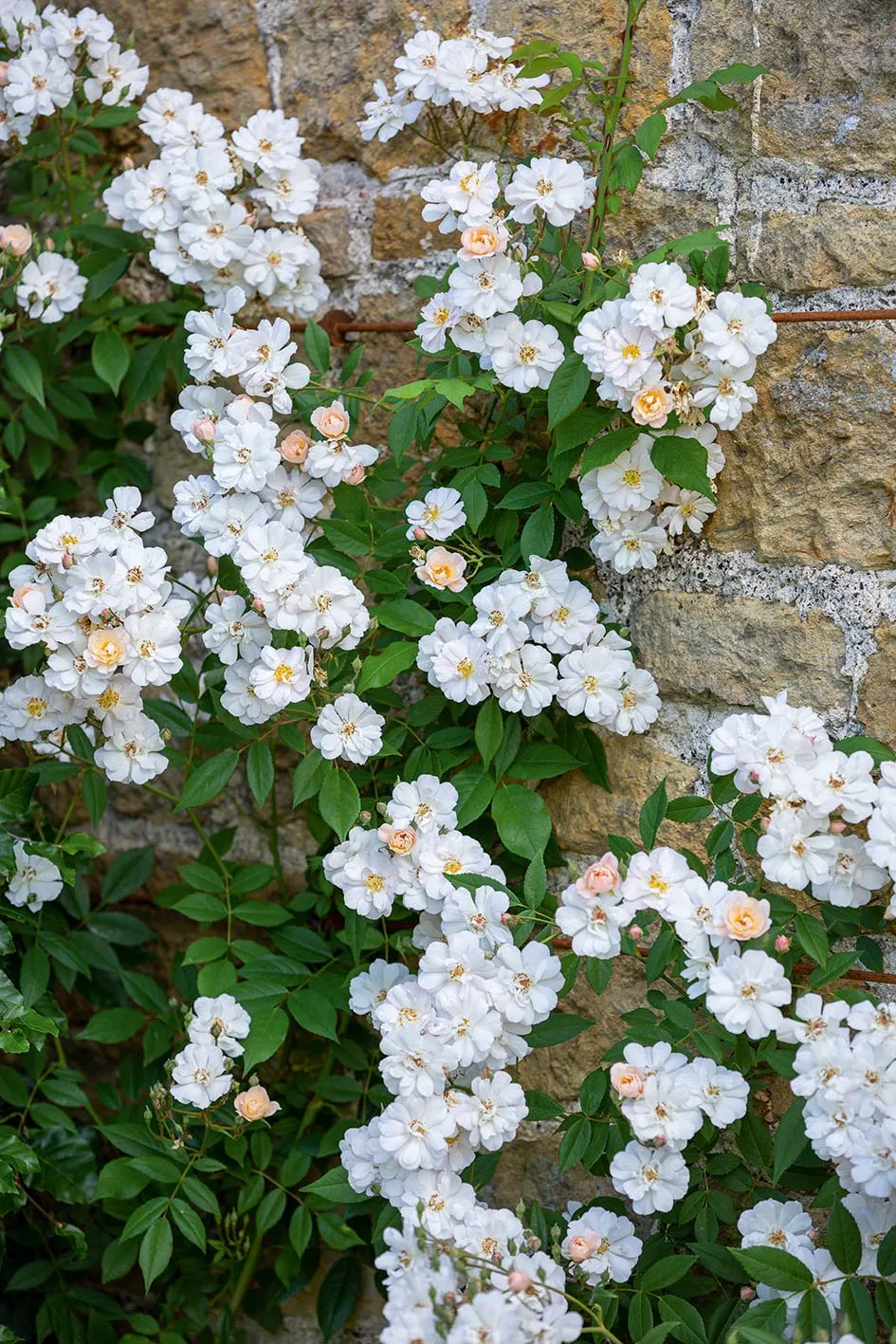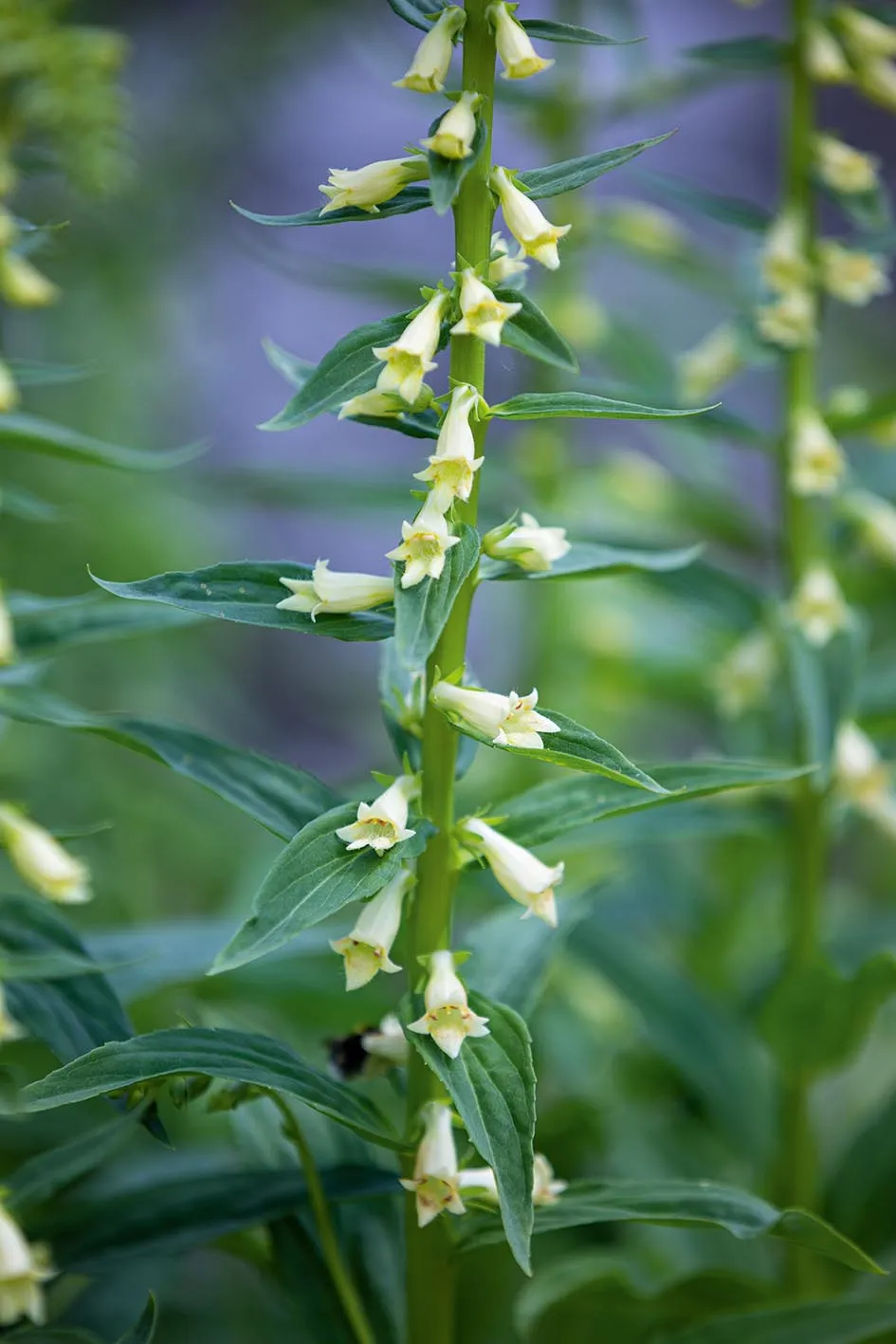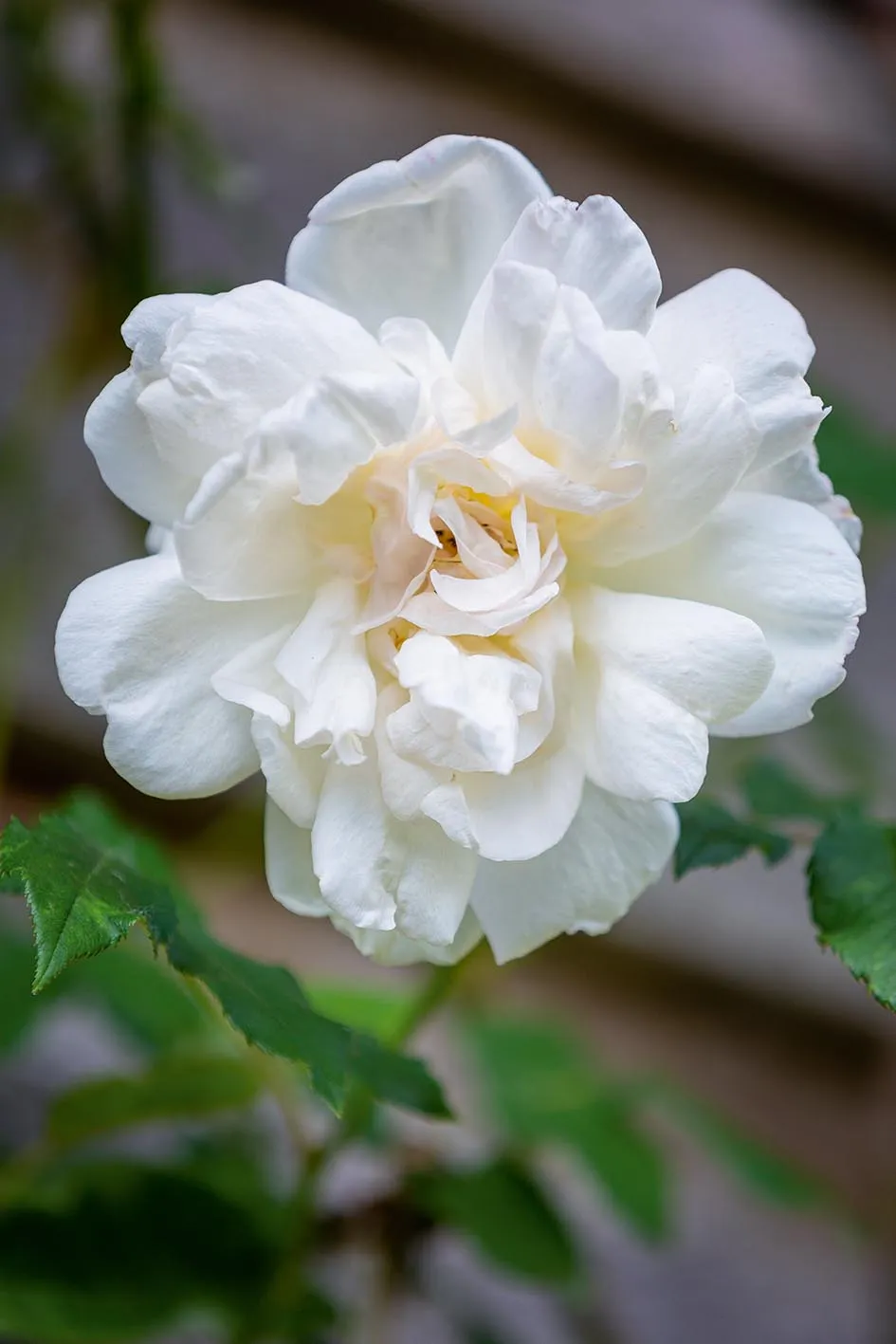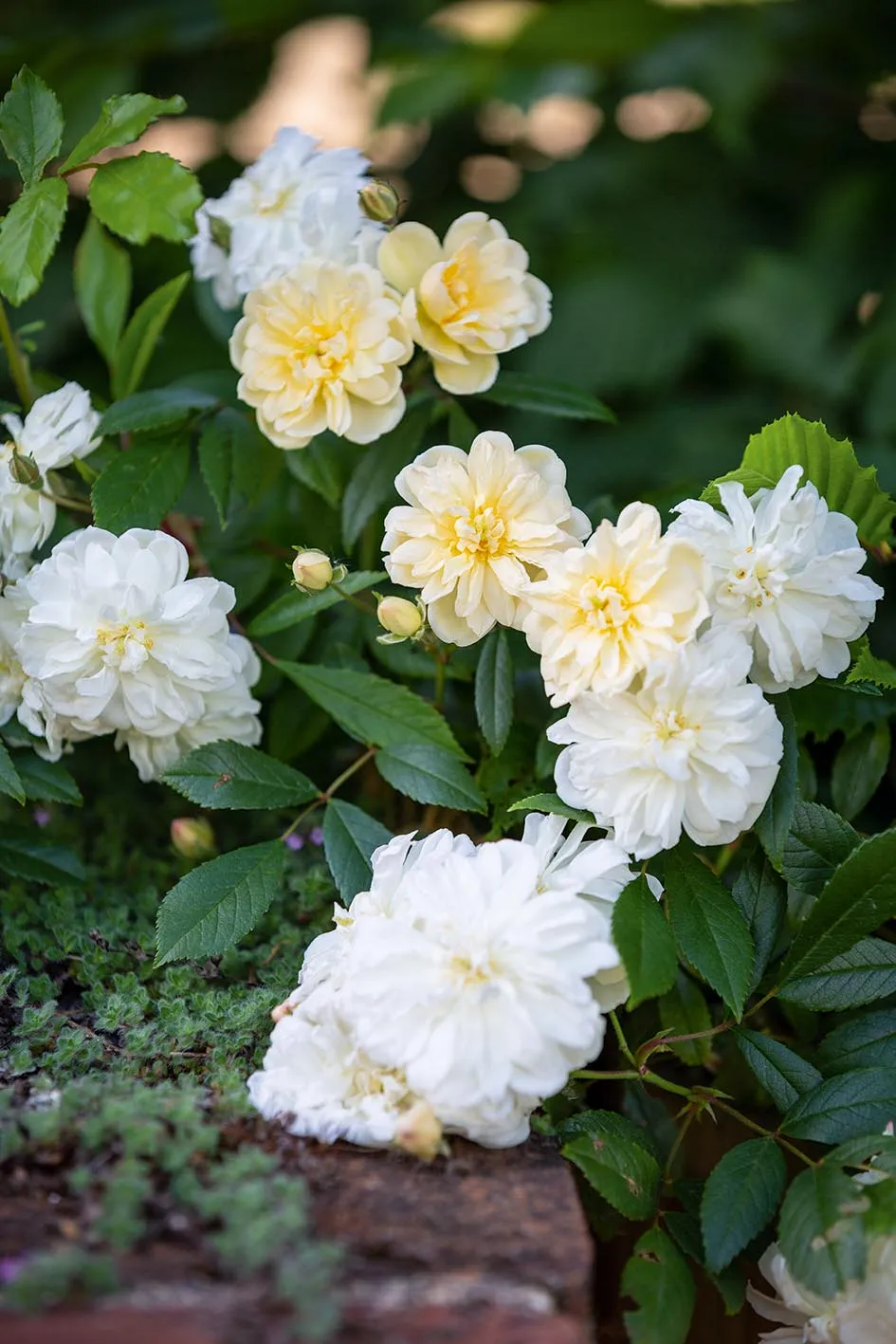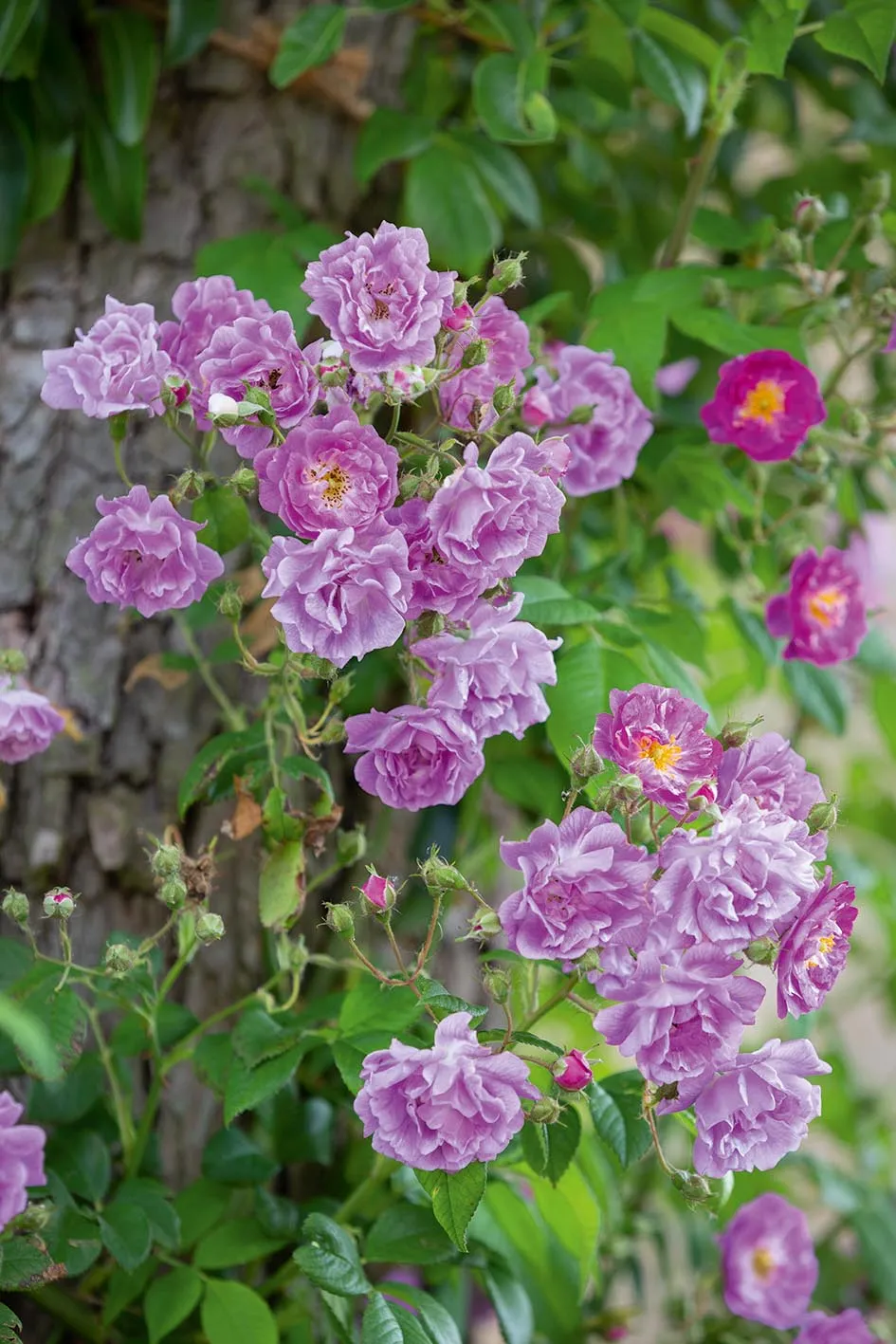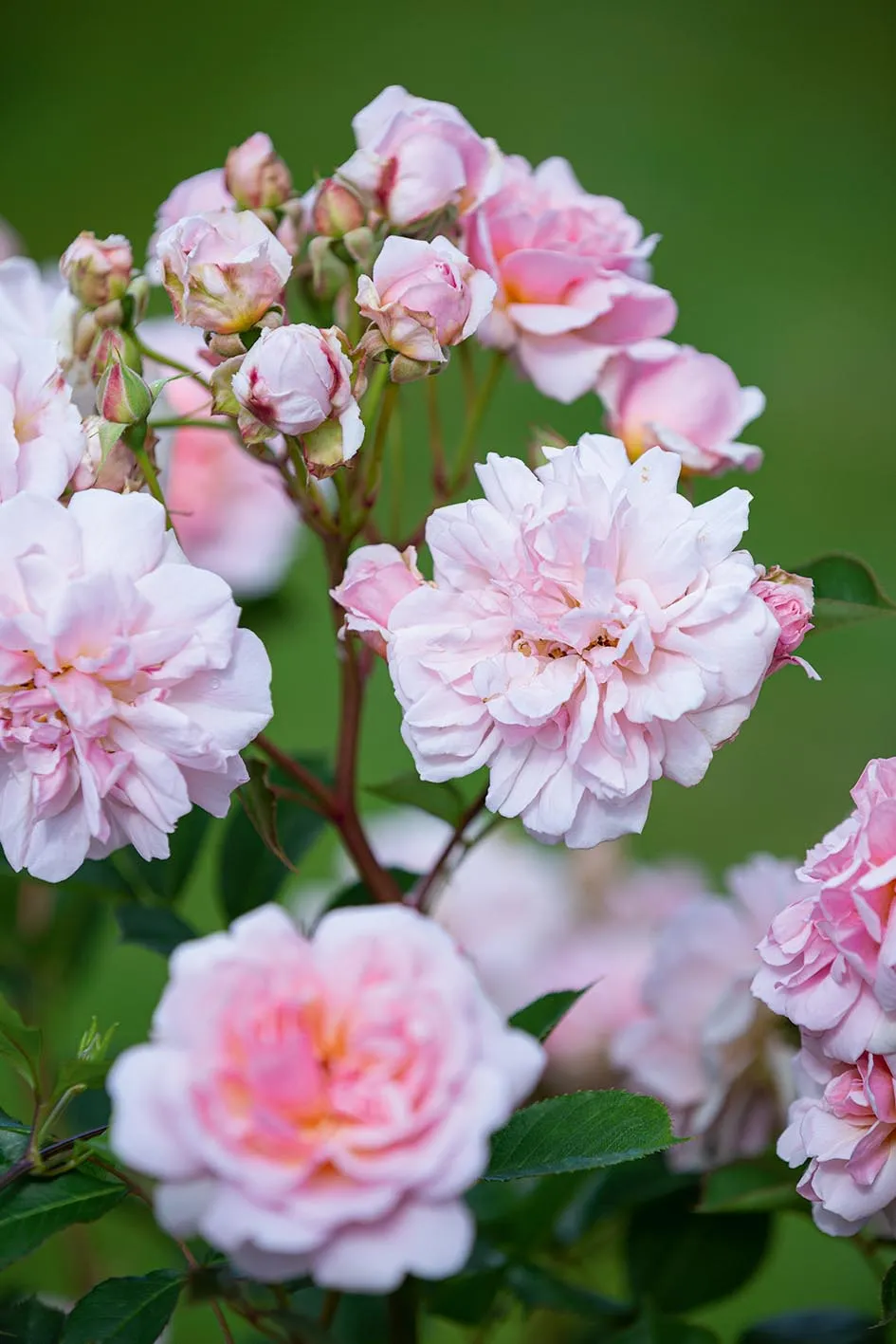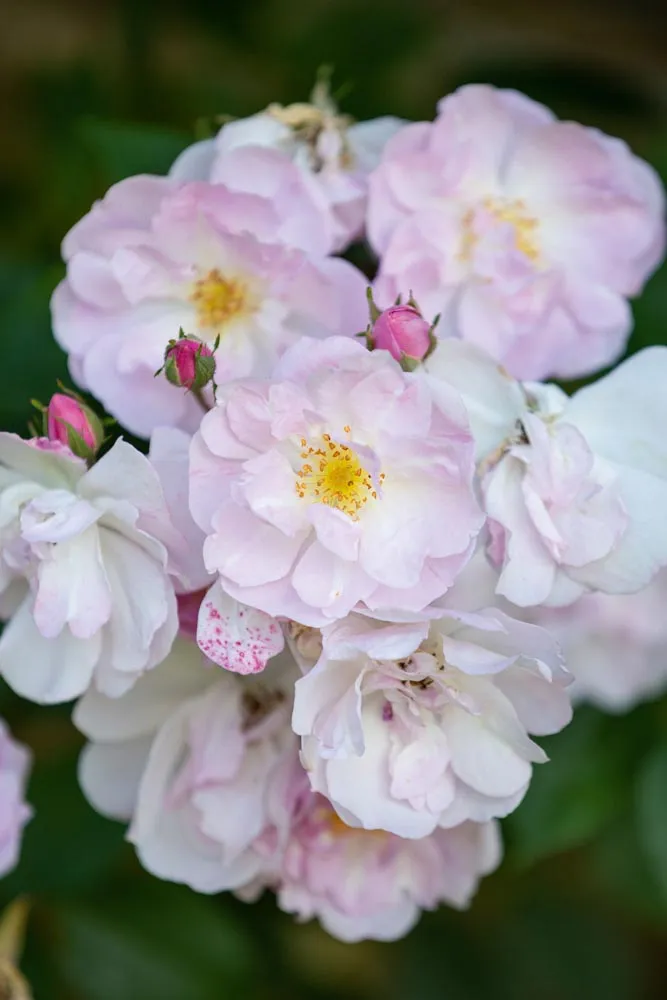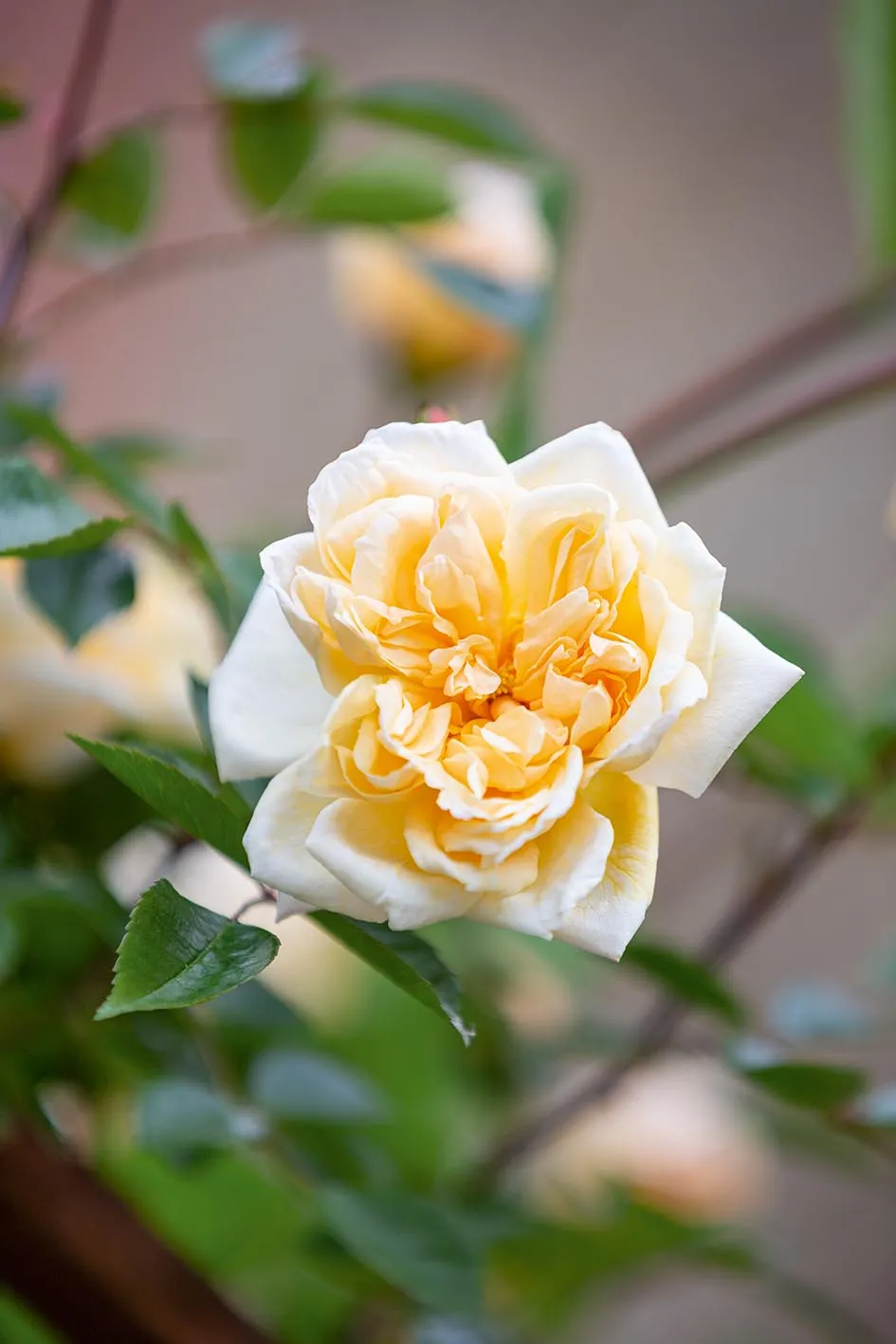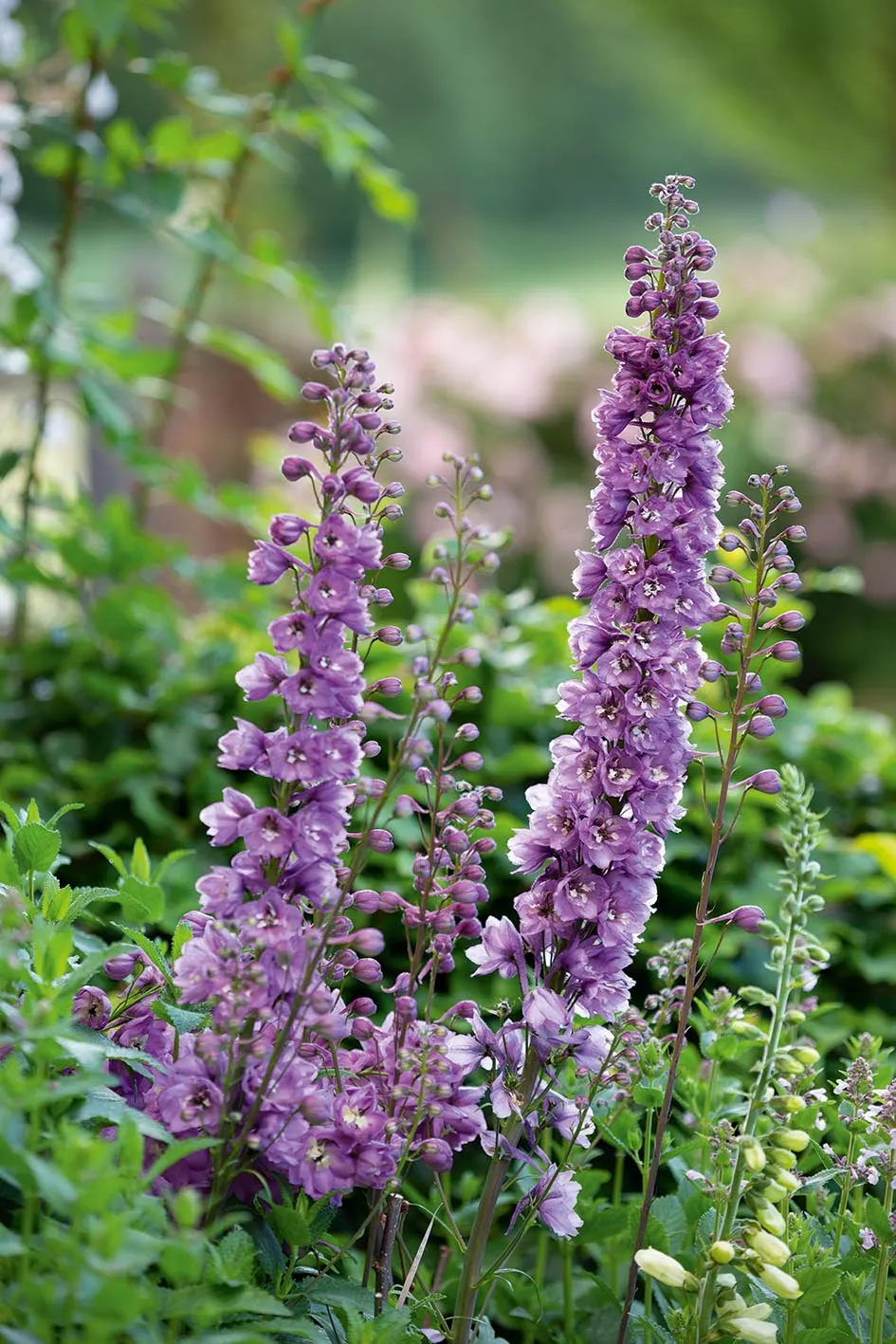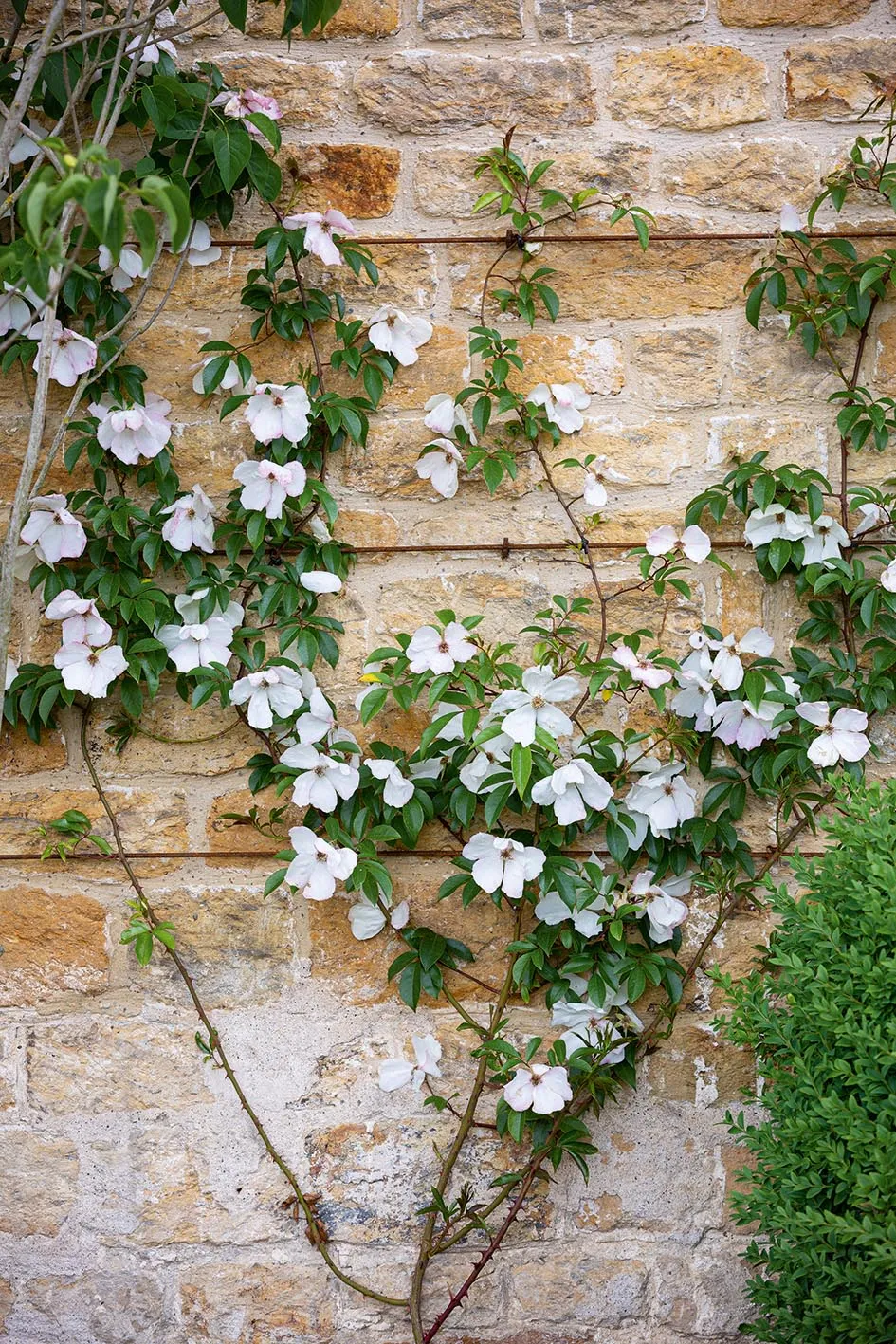For this former farmhouse in West Sussex, designer Arne Maynard had created a cottage-style garden that takes a traditional approach to both the planting palette and hard landscaping it uses. The garden is three acres with fertile loamy clay on greensand. It is a temperate climate in the equivalent of hardiness zone USDA 9.
Nestled close to the town and country mansion of Petworth lies an enchanted stretch of the River Rother (the West Sussex Rother, not the river of the same name to its east), populated plentifully with brown trout. Kingfishers flit down soft banks lined with statuesque alders, willow warblers lilt pleasantly through the day, buttercups spangle the water meadows gold in their season. For several decades in the 18th century the river was navigable by trading vessels, and there was once an important crossing here, and a meeting place at a border between two worlds, with the richness of the Wealden greensand to the north giving way to the bony chalk and the shepherds of the South Downs to the south. Its local importance declined dramatically when its stone bridge was removed and reconstructed a few miles downstream.
Seemingly unmoved by these petty geopolitical vicissitudes, a farmhouse remains, boasting continuous occupancy of that spot since it appeared in the Domesday Book. Nightingales still sing here as they have for centuries, and a barn owl nests in the ancient timbers of the barn. Ravens have returned to haunt these lands after a brief absence of several decades. Would it seem reckless to impress the services of a garden designer on so numinous a location? On acquiring the property – which they had known and loved for many years before having the opportunity to move in – its new owners feared that it may be, and knew that they would have to tread carefully. However, the garden needed attention of some sort and after much research and deliberation they appointed Arne Maynard to re-invigorate the landscape surrounding the property.
Unbeknown to them they had already met him once, under a pear tree at Arne’s RHS Chelsea Flower Show garden for Laurent-Perrier in 2012. This meeting proved portentous in more ways than one – when Arne required a specimen tree to plant at a key location between the main garden entrance and the house, a magnificent standard pear was chosen, and it now looks as though it has inhabited that spot for decades.
Read more about how Arne has transformed the garden and its planting below.
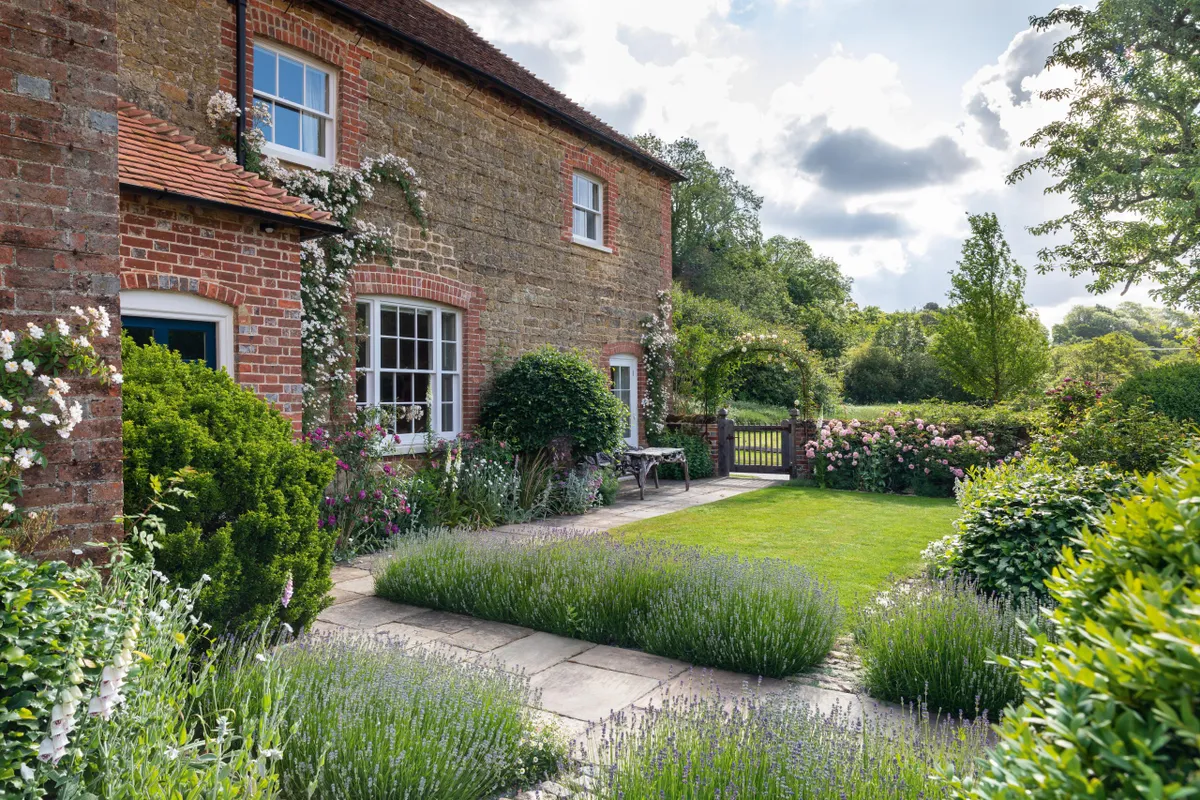
A planting palette of archetypal cottage garden plants fills the small front garden. Lavandula angustifolia lines the path, the Hybrid Perpetual rose Rosa ‘Reine des Violettes’ sits next to the porch, while the Hybrid Musk Rosa ‘Felicia’ is next to the gate.
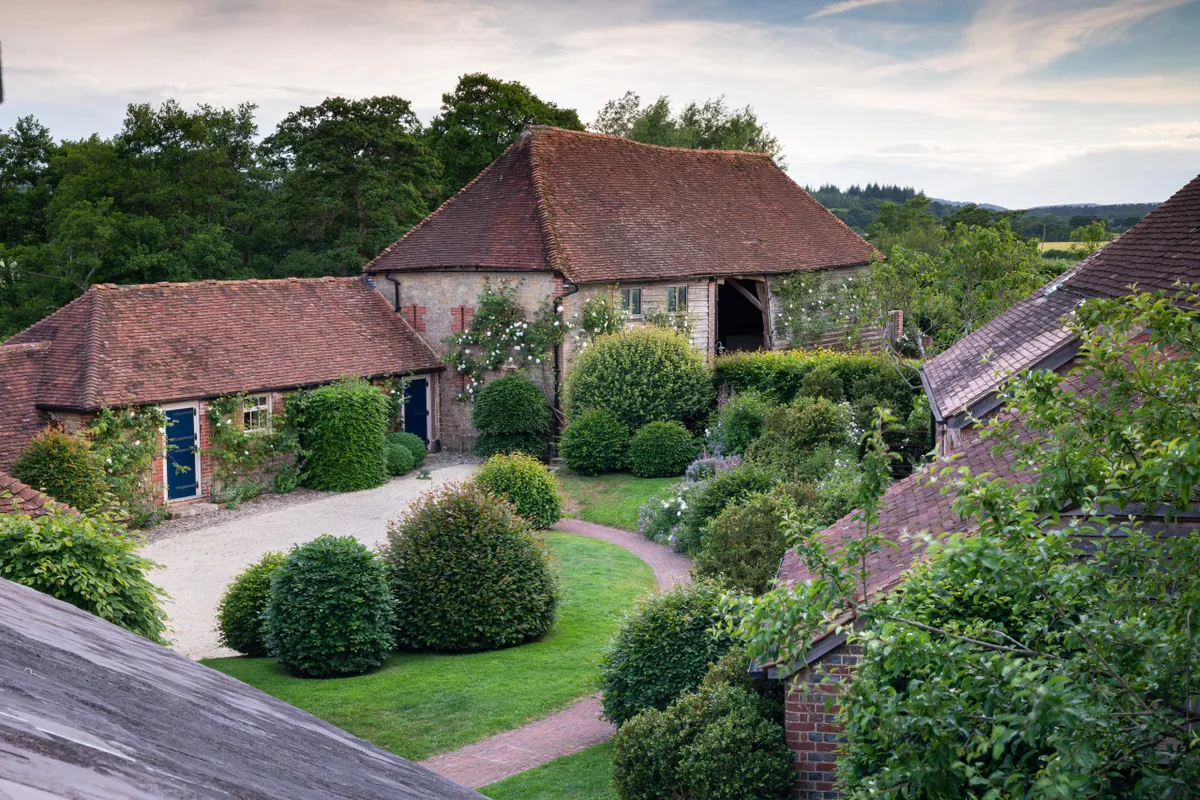
The magnificent old barn may have outlived its agricultural purpose, but still houses a pair of barn owls. Rosa ‘Madame Alfred Carrière’ now clothes its walls, while relaxed topiary pieces of field maple (Acer campestre), hornbeam (Carpinus betulus) and yew (Taxus baccata) articulate the courtyard.
12 key plants from the garden
*Holds an Award of Garden Merit from the Royal Horticultural Society. †Hardiness ratings given where available.
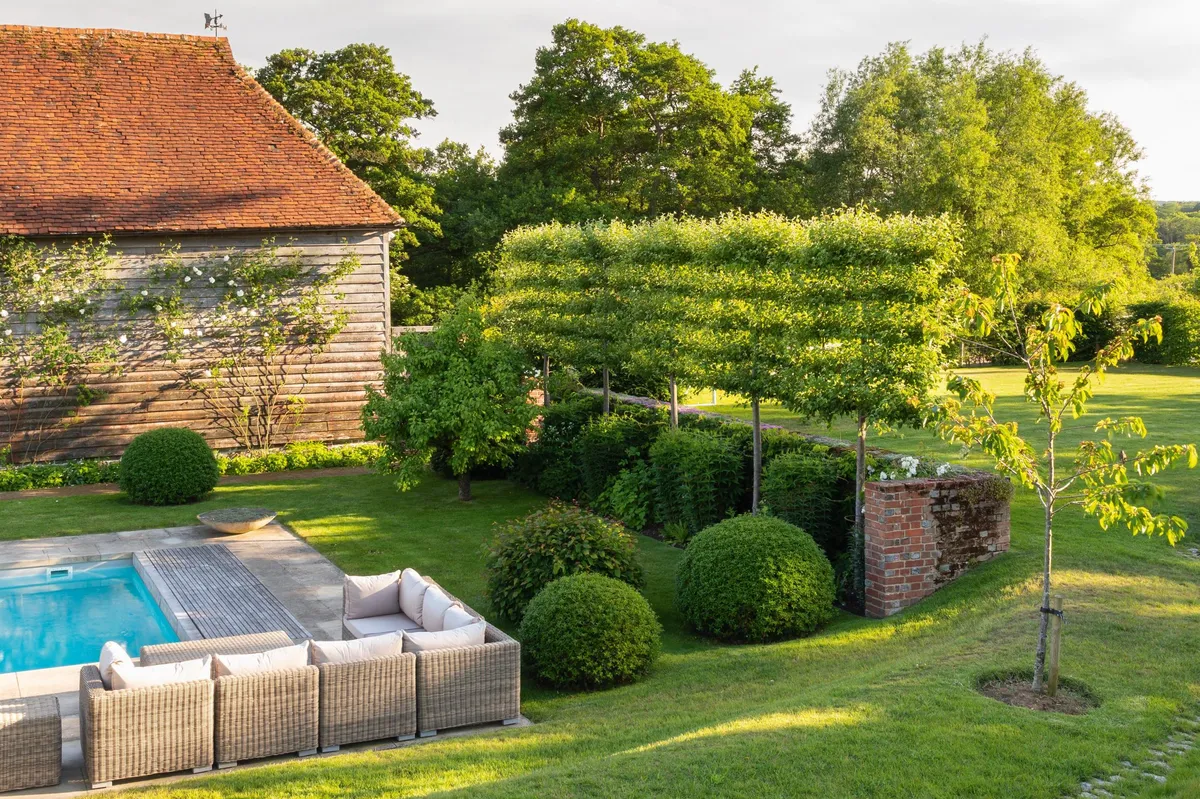
A row of pleached Malus ‘Evereste’ provide seclusion for the pool. Several productive fruit trees have been planted loosely on the terracing of the slope.
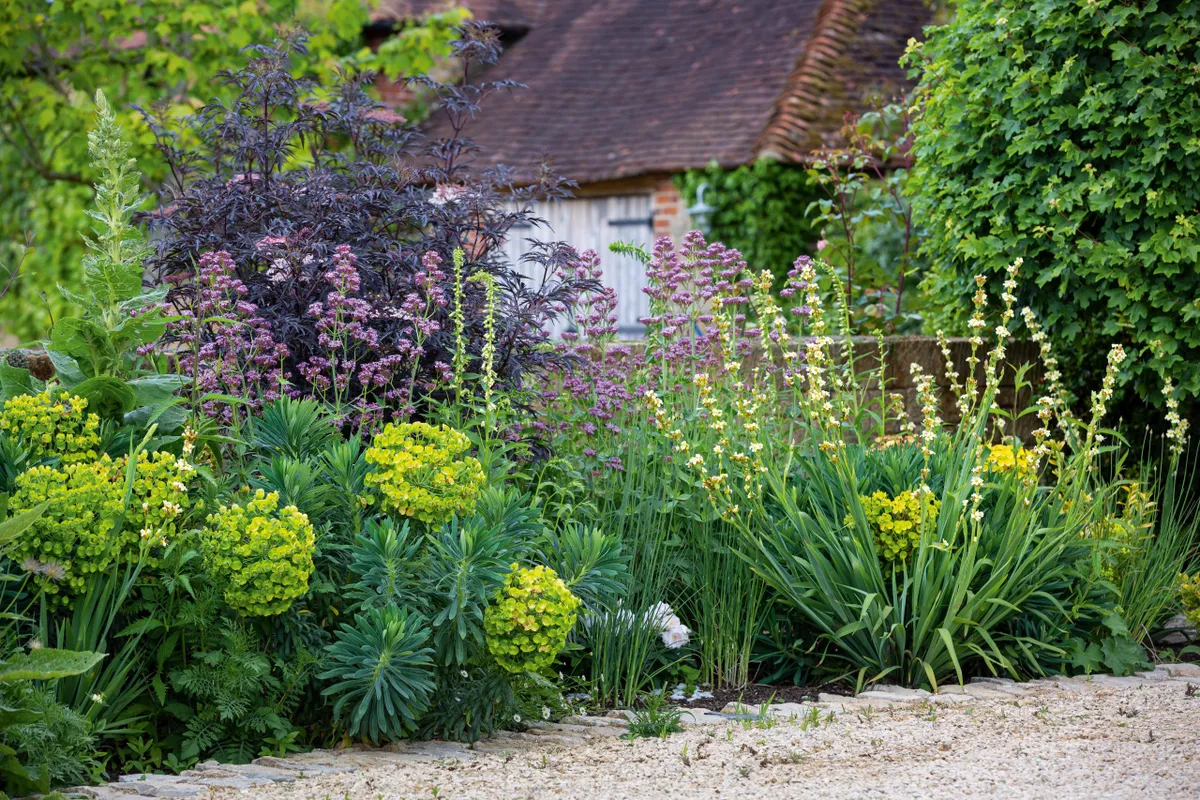
A pleasing informal collection of plants, planted adjacent to the newly laid drive past the house, including Sambucus nigra f. porphyrophylla ‘Eva’, which presides over Euphorbia characias subsp. wulfenii, Centranthus lecoqii, Sisyrinchium striatum and Digitalis lutea. These herbaceous plants will all be capable of self-seeding into the self-binding gravel of the track.
Arne Maynard’s approach to hard landscaping
A careful and subtle approach to treating the hard surfaces here has gone a long way towards preserving and enhancing the special atmosphere of the garden. The design completely eschews the use of cement-based mortar to create a solid bed for the paving, or to point the gaps in between. This traditional approach to installing paving only works with traditional materials. Modern paving slabs are generally cut far too thin to be able to achieve the requisite stability without the use of any cement.
Arne’s approach to the track that leads agricultural traffic around the gentle curve in front of the house was also quite organic. Here a self-binding gravel was laid, with planted areas at the verges sparingly and indefinitely marked by groups of cobblestones. As it was installed, Arne deliberately withheld from rolling the top layer of the gravel when wet (as is generally recommended) in order to leave it slightly loose. Such a treatment has encouraged the incursion of self-seeding plants such as Pulsatilla vulgaris and Tulipa turkestanica, which revel in the well-drained conditions, and now help to soften the boundaries between farm track and garden still further.
